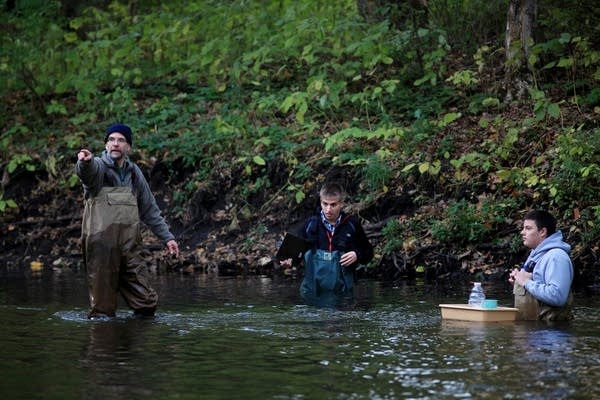Can woodchips, wetlands clean polluted Vermillion River?

The iconic Dakota County river has struggled for decades with nitrate runoff from local farms. Watershed experts are experimenting with an approach that may aid the Vermillion and other Minnesota waters, if it works. Here, high school students work in the river on a field trip.
Jeffrey Thompson | MPR News 2014
Go Deeper.
Create an account or log in to save stories.
Like this?
Thanks for liking this story! We have added it to a list of your favorite stories.


